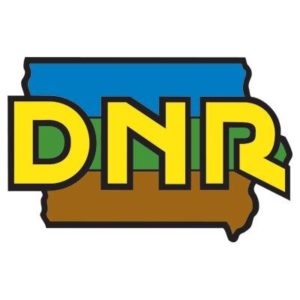 The first of Iowa’s popular shotgun deer seasons is Dec. 2-6 when an expected 60,000 orange clad hunters head to the timber. That group will be followed by another 60,000 hunters who prefer the Dec. 9-17 second shotgun season.
The first of Iowa’s popular shotgun deer seasons is Dec. 2-6 when an expected 60,000 orange clad hunters head to the timber. That group will be followed by another 60,000 hunters who prefer the Dec. 9-17 second shotgun season.
Each contingent will also pack along thousands of antlerless tags, to extend their time in the field.
Fans of cold weather purchase about 40,000 tags for the Dec. 18-Jan. 10 late muzzleloader season.
Iowa’s shotgun seasons allow for group drives; drivers pushing deer toward blockers. Anyone in the group may tag a downed deer—with their own tag.
That stands in contrast to other states—and even Iowa’s more solitary muzzleloader and bow seasons. However, it has proven to be an efficient method for taking deer, since modern deer hunting was introduced here in the early 1950s. Whatever the season, any deer must be tagged before it is moved or within 15 minutes—whichever comes first.
It also holds the potential for danger, as drivers move closer to, or across, their friends on a drive.
That’s why wearing solid blaze orange is mandatory. The minimum amount covers a hunter’s torso. But more is better.
For several years now, deer hunters have noticed fewer whitetails than in the early 2000s. That is by design. A decade ago, state lawmakers instructed the Iowa Department of Natural Resources (DNR) to reduce the deer population, after steady growth through the previous few decades.
With addition of county and season specific antlerless tags, generous quotas, and a couple extra seasons, near Thanksgiving and during January, hunters responded. Adaptive regulation changes have lowered the deer herd to mid-1990s target levels, in all but a handful of counties.
Hunters in 27 north central and northwest counties have no county antlerless tags and may take only antlered deer during the first shotgun season.
Iowa’s overall deer harvest across all seasons last year was 101,397, down more than 30 percent from the 2006 peak and the 2017 harvest should be similar.
“Hunters working with landowners at the local level is the best and most efficient way to keep deer numbers at acceptable levels and provide a high quality deer herd,” stresses Tyler Harms, wildlife research biometrician for the Iowa DNR.
Deer hunting safety reminder
Hunters are encouraged to use safe hunting practices and to discuss the hunting plan so each member of the hunting group knows where the others will be at all times during the hunt. Hunters must wear one of the following articles of external visible solid blaze orange clothing when hunting deer with a firearm: vest, jacket, coat, sweatshirt, sweater, shirt or coveralls. An orange hat along is not sufficient.
Safety Tips
• Treat every gun as if it is loaded, keep the muzzle pointed in a safe direction
• Unload the firearm and open the action, especially when crossing obstacles
• Wear plenty of blaze orange. Hunters want to be seen from all sides in the woods and fields
• If using a new gun or a gun that has not been used for a while, be sure to practice before the season opens to get reacquainted with it
• Be sure of the target and what’s behind it
• Don’t shoot at running deer
• Discuss the hunting plan with everyone in the group. Outline the role for each person and where they will be throughout the hunt. Plan your hunt and hunt your plan. Communication is critical to ensure everyone knows where each other is at all times.
• Bundled up – keeping your finger off the trigger and muzzle control are both extremely important as bulky coats and gloves increases chances of an accidental discharge.
Most hunting in Iowa is done on private land. Hunters should touch bases with the landowner before the season opens to make sure permission to hunt is still granted. Other hunters may also have permission to hunt the same area.
